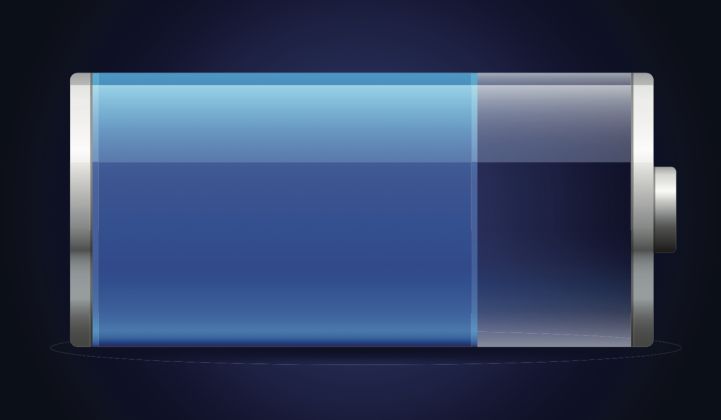A technology that has been around for at least two decades could be the key to the lithium-ion batteries of the future, according to 3DIcon.
The maker of three-dimensional display technologies, based in Tulsa, Oklahoma, is aiming to commercialize a new material for lithium-ion battery anode production via a subsidiary called Coretec.
The process, originally developed at North Dakota State University and subsequently licensed to Coretec, involves the use of a ring-based silicon molecule called cyclohexasilane, or CHS, to replace silanes currently used for certain types of anode manufacturing.
CHS has a number of advantages over commonly used monosilane, according to Doug Freitag, vice president of technology and business development at 3DIcon. The first is that CHS packs more silicon per molecule than monosilane does.
However, monosilane is a colorless, flammable gas at room temperature, which means it is difficult and costly to store and move around.
CHS, on the other hand, can exist as a liquid at room temperature, greatly simplifying storage and transport -- thus potentially helping to reduce manufacturing costs or enable new production processes.
It can be used in gaseous form after heating, and it can be spun into nanowires, either as a gas or as a liquid. Research on electro-spinning CHS into amorphous silicon nanowires was published by North Dakota State University back in 2010.
“We have demonstrated the materials science of this process, and deployment of this technology appears to depend mainly on engineering process optimization and cost reduction of the Si6H12 starting material,” wrote the authors.
Now 3DIcon believes CHS could be manufactured for less than $100 per kilogram, which it considers to be competitive with alternatives. Monosilane is currently being sold at prices as low as $1 to $10 per kilo, Freitag admitted, mainly due to economies of scale.
“We believe we can make silicon with greater capability and at a better price point than if you’re using other silanes that are being considered,” he said.
A final potential benefit of CHS is that it might be suitable for mixing with other compounds, in theory opening to door for molecules including elements such as boron, phosphorus and germanium.
Whether this characteristic could be useful to the battery industry is unclear. Freitag said it was not possible with traditional approaches, and that the ability to "dope" CHS might open the door for new chemistries.
These features are all potentially important for battery vendors seeking to incorporate silicon into their lithium-ion mix.
Companies focusing on silicon anode-based lithium-ion batteries include Amprius, Enevate, Enovix, Envia Systems and Leyden Energy, which was taken over by A123 Systems in 2014.
So far 3DIcon has been making CHS in gram-level quantities. But the company is looking to tie up an agreement with a specialist chemicals supplier, which could allow it to scale up manufacturing capacity to kilogram or even ton levels within a month's time.
Freitag said the product should be commercially available within six to 12 months, with pricing yet to be decided. 3DIcon has not yet worked out how much the application of CHS to anode manufacturing could help cut costs.
Nevertheless, Freitag said 3DIcon was already in discussions with anode manufacturers and has at least one potential customer poised to test the material when it becomes available. The customer could be announced within two months, he said.
“The key step right now is to get it out of the lab and get it scaled so we can start providing larger quantities of material to interested battery anode material manufacturers,” he said. “The industry has really not got its hands on this material.”
That could be set to change as automakers look for new battery chemistries to enhance the range of electric vehicles.
“There are a few startups looking at working out ways of developing new silicon products that can be added at higher percentages into the anode to increase energy density,” said Claire Curry, senior associate for advanced transportation at Bloomberg New Energy Finance. “But at the moment, all these companies are working at small-format scale.”



